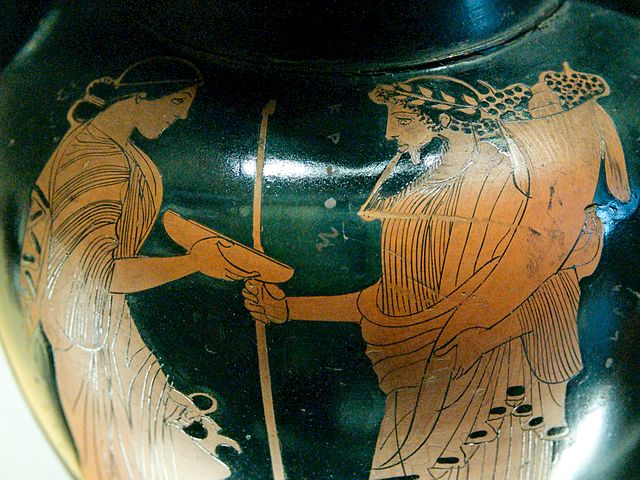Orcus was a god of the underworld, punisher of broken oaths in Etruscan and Roman mythology. As with Hades, the name of the god was also used for the underworld itself. Eventually, he was conflated with Dis Pater and Pluto.
Orcus Mouth, a 16th-century folly in the Gardens of Bomarzo.
Fresco of Odysseus (Etruscan: Uθuste) and the Cyclops (Etruscan: Cuclu) in the Tomb of Orcus, Tarquinia, Italy.
The Descent of Aeneas in the Underworld (c. 1530–1540), Walters Art Museum.
Hades, in the ancient Greek religion and mythology, is the god of the dead and the king of the underworld, with which his name became synonymous. Hades was the eldest son of Cronus and Rhea, although this also made him the last son to be regurgitated by his father. He and his brothers, Zeus and Poseidon, defeated their father's generation of gods, the Titans, and claimed joint rulership over the cosmos. Hades received the underworld, Zeus the sky, and Poseidon the sea, with the solid earth available to all three concurrently. In artistic depictions, Hades is typically portrayed holding a bident
and wearing his helm with Cerberus, the three-headed guard-dog of the underworld, standing at his side.
Hades/Serapis with Cerberus, mid-2nd century AD statute from the Sanctuary of the Egyptian Gods at Gortyna
Hades (right) and Persephone (left). Detail from an Attic red-figure amphora, c. 470 BC. From Italy
Pinax with Persephone and Hades Enthroned, 500-450 BC, Greek, Locri Epizephirii, Mannella district, Sanctuary of Persephone, terracotta – Cleveland Museum of Art
Red figure volute krater with scene of the underworld, follower of the Baltimore Painter, Hermitage







